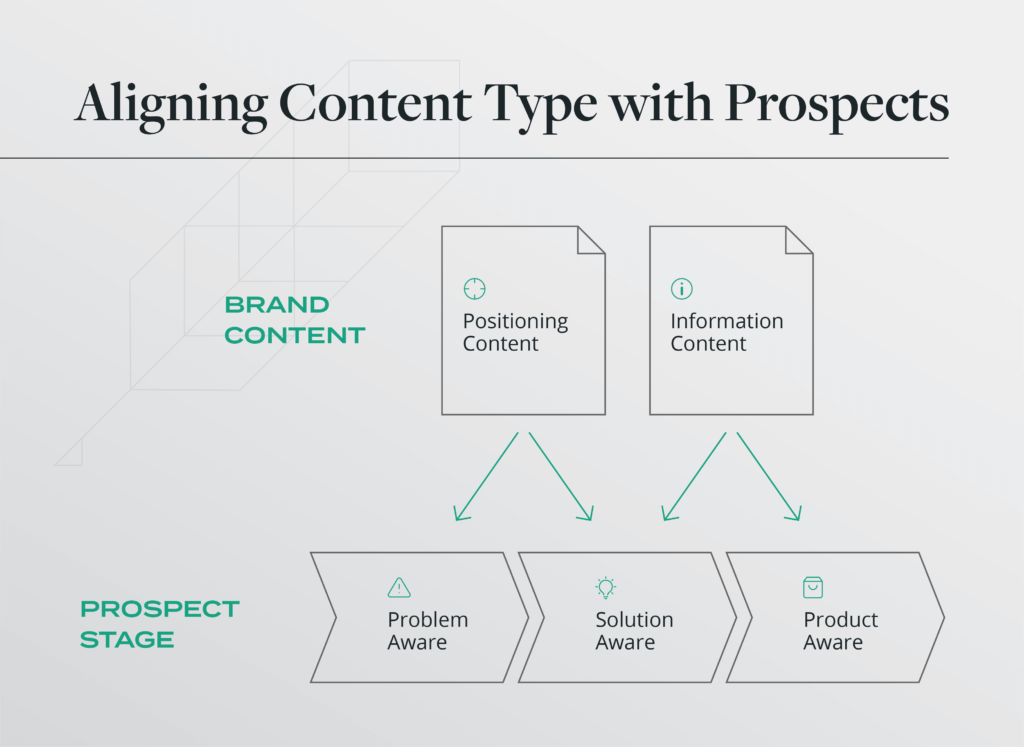As more users are moving away from traditional search engines to generative AI platforms like ChatGPT, Copilot, Claude, and Perplexity, and others, should businesses just give up on creating quality content as a way to attract new customers?
Hell no. In fact, this seismic shift in how people search and how these platforms pull in information offers an incredible opportunity for businesses. It just requires a shift in strategy.
The Shift in How People Search – and the Business Opportunity
Gartner says that by 2026, traditional search engine volume will drop 25 percent, with search marketing losing market share to AI chatbots and other virtual agents. But I think that’s even a conservative estimate. ChatGPT is the fastest growing app in history. They reached 100 million users in two months. Compare that to Instagram that took two and a half years and TikTok nine months to gain that many users.1 ChatGPT now has 400 million weekly active users, and that’s just one of the available generative AI platforms.2
The takeaway of that data is this: people are rapidly going to AI chatbots for everything from cooking questions to finding the best enterprise software solutions…and your business needs to be there.
With Google’s AI Overviews and the meteoric rise of these gen AI platforms, your business has a big opportunity to show up in more places than ever before. Not to overstate it, but what we’re seeing is a sort of de-monopolization of web search.
Just like search engines, gen AI platforms pull data from all across the internet – including your company’s website, listings on directories, business profiles, social media profiles, and customer reviews. This is why it’s more important now than ever to proliferate information, good reviews, Q&As, FAQs and other content that explain what your company does, why your offering is unique, and testimonials to the quality of the product or service you provide.
AI Chatbots and AI-Powered Search Engines Have Changed How Search Works
I’ll try to not get too technical here, but I think it’s important for business owners, marketers, and anyone using the internet really to understand some basics on how AI platforms work and how search engines are evolving with AI.
Traditional search engines work by matching keywords from terms entered in a query with the text on indexed webpages. They use algorithms to identify exact or partial matches between the query and page content, focusing on factors like keyword frequency, placement (i.e. in titles or headings), and metadata. This approach emphasizes syntactic similarity rather than understanding the context or intent behind the query.
Where traditional search is driven by algorithms, AI chatbots employ neural networks used in large language models (LLMs). Wait, what? I know, that’s way too technical, so let’s look at what it actually means in application.
Instead of matching keywords, AI platforms and the AI being introduced to search engines are interpreting the intent of users. How? Through what’s called entity association that moves beyond keyword phrases to understand the context of what’s being queried. Basically, they’ve moved beyond only looking for certain words to identifying concepts like ideas, locations, times (called system entities), and product names, companies, industries (custom entities). Another way to think of “entities” is themes.
This fundamental change in search functionality is an opportunity that brands and marketers can leverage to connect with prospective customers. Clair Snook explains all this concisely:
For brands, this means more than having a website presence, it is now about tying a brand to the themes that customers care about. For instance, a brand associated with eco-conscious values might appear in searches related to sustainable practices. Achieving this isn’t about keyword stuffing but creating genuine, authoritative content that aligns with the audience’s values.3
She goes on to give more detail about what the AI chatbots do and the opportunity it presents.
AI search doesn’t simply index pages; it interprets and weaves together insights from multiple sources to create clear, authoritative answers. For marketers, this means rethinking content creation – not just aiming for visibility but creating value-driven narratives that resonate with both users and AI systems.3
For companies to stay competitive in the face of all these changes — and keep showing up where their customers are searching — they will need to rethink their content strategies.
Strategies to Appear in AI Chatbot Results
As with any emerging technology, the tactics to get the most out of it will be ever-evolving. Nonetheless, given what we’ve discussed above about AI platforms and the changes to how searches work, we’ve gathered some ideas on how companies can capitalize on this massive opportunity.
When it comes to old-school “they ask you answer” kind of content focused on just that — answering those how-to questions for somewhat simple tasks or instructions — well, sorry to say, AI overviews and chatbots are going to own that space. The kind of searches that can be answered succinctly with zero-click content are no longer what content marketers and SEOs should be going after.
But the fact that the more top-level, low intent traffic will be served by AI actually just accelerates the trend of brand content needing to serve more middle- and bottom-of-funnel purposes. There are two main types of content that will allow marketers to be efficient with their efforts to both land in AI chatbot results and serve the business more broadly.
Brand Positioning Content
As a seasoned content marketer who’s relentlessly advocated for customer-centric content, this recommendation pains me a little. But a new approach is essential in this new paradigm. Brand positioning content provides valuable information on a topic while also actively talking about how your company solves those problems. And, even bragging a little bit. Some important boxes you need to check in your brand positioning content to get it showing up in AI chatbot results:
- Work in your company’s unique value proposition wherever possible and tie it directly to the topic the content is about.
- Include language like “[Company] is the best marketing automation platform for small businesses.” (This one is a little cringey, but people are searching for “who’s the best at X” in AI chatbots…and you want your company to be part of that conversation.)
- Publish content on topics that tie into those “entities” or themes we talked about earlier so your brand gets associated with those themes your customers care most about.
- Offer reasons to believe, which means talking about success indicators, beneficial outcomes or the kind of results customers can expect from using your product or service.
Brand Information Content
Where brand positioning content communicates more of the big picture about your company, brand information content provides key details about your offering for more middle- or bottom-of-funnel user searches. Like it or not, people are asking AI chatbots about your industry — and even your company specifically. And you need to train it to be a good company representative.
Brand information content provides detailed information about the buyer’s journey, answers to common objections, your process, and what using your product looks like. Some specific kinds of content you can develop to serve this purpose include the following:
- Buyer’s Guide
Create a detailed guide for prospective customers that offers info like a market overview, feature sets of your product, product specifications, case studies, versus comparisons with similar products or service providers, pricing, and more. - FAQs
Give your potential customers the ability to find the information they need with frequently asked questions on your website to answer your prospects most common questions and improve their perception of your company. - Your Process
Map out what it looks like to work with your company. As a service-based firm, clearly define and explain the steps of your process so prospects gain confidence in what to expect. For product-based companies, think more along the lines of talking about the problem/solution/result process of using your product. - Reviews
Get positive reviews on business profiles and in directories. Request these from customers regularly as online sentiment is important in shaping AI chatbots’ consideration of your company. Then you can repurpose those and put them on your website as well.
When we consider the buyer journey, these two types of content fit nicely into your content strategy to move prospective customers towards purchase through their own research via AI search and AI chatbots.
Two Other Considerations for AI Chatbot Optimization
Website Design and Performance:
Website design, user experience (UX), and performance factors like page load speed have always been key indicators search engines use to determine the value and validity of your website. And it’s no different for AI. Having a site with fast load speeds, mobile-friendliness, strategic UX, and structured data allow AI to easily navigate your content and increase its visibility in results.
Natural Language Processing (NLP):
In short, NLP is what allows AI to better understand human language and the context of ideas. What this looks like from a content creation perspective is using clear, concise language and incorporating related terms and phrases that provide context for ideas to help AI understand its broader meaning rather than strictly focusing on keyword integration.
The Takeaway: The Value of Content and SEO Hasn’t Changed
Content marketing and SEO are not going away. In fact, the introduction of AI search and AI chatbots are providing more opportunity for companies than ever. Though generative AI is constantly and rapidly evolving, the strategies and tactics here are sound approaches to get your content and brand showing up where your audience is looking.
Even as you optimize your website and content to take advantage of these opportunities, I urge you to not lose sight of why we make content in the first place: to provide value to humans. The best content comes out of the motive of serving people with knowledge, insights, and perspectives that make their lives better and their jobs easier. If you start there, you’ll be on the right track to success.
1 “ChatGPT Is The Fastest Growing App In The History Of Web Applications,” by Cindy Gordon, Forbes. Feb. 2023.
2 “ChatGPT / OpenAl Statistics: How Many People Use ChatGPT?” Backlinko. Feb. 2025.
3 “Think you know SEO? Al search is changing everything – here’s what you need to know,” by Claire Snook, Marketing Tech, Mar. 3, 2025.




